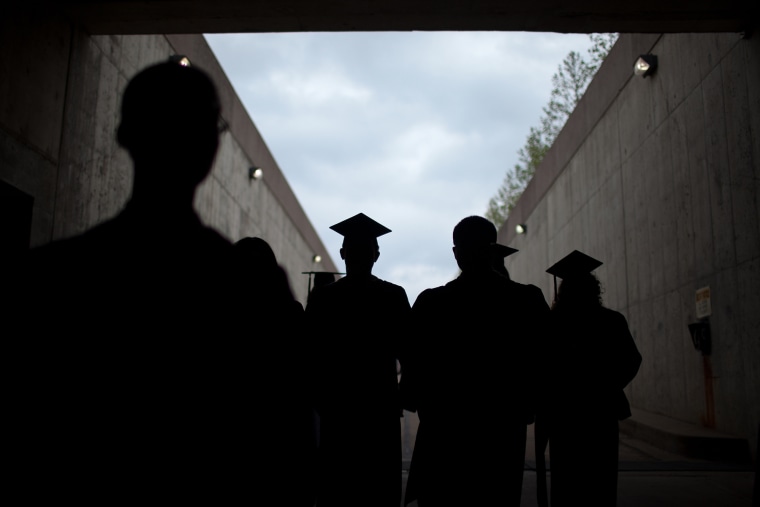Congratulations, graduates, on your diploma. Now what about that $29,000 student loan debt?
More than 70 percent of graduates will carry student debt into the real world, according to the Institute for College Access and Success. And the average debt is just shy of $30,000.
But the news will get worse next week when interest rates on student loans are set to rise again.
Though federal student loan rates are fixed for the life of the loan, these rates reset for new borrowers every July 1, thanks to legislation that ties the rates to the performance of the financial markets.
The interest rate on federal Stafford loans will go from its current fixed rate of just under 4 percent to 4.66 percent for loans that are distributed between July 1 and June 30, 2015.
For graduate students, the rate on Stafford loans will rise from just over 5 percent to 6.21 percent.
Direct PLUS Loans for graduates and parents are still the most expensive, with rates rising to 7.21 percent.
The increase in monthly federal student loan payments can add up quickly, but shouldn't be too burdensome for most students. For every $10,000 in loans, new borrowers will pay about $4 more a month based on a 10-year repayment period.
Still, experts warn that this is only just the beginning.
"Federal student loan rates will continue to increase in the next few years and will likely hit the maximum rate caps which are as high as 10.5 percent for some loans," said Mark Kantrowitz, senior vice president and publisher of Edvisors.com.
For sophomore student Samantha Cook, the decision to go to George Washington University was a big one financially. She says she had doubts about it.
"My parents wanted to assure me that no matter what I picked, we'd find a way to make it work," Cook said. Like most families, she and her parents are making it work by combining their household savings, scholarships and grants—and student loans.
Despite rising tuition and borrowing costs, the Cook family decided against Samantha transferring to an in-state university.
And despite the debt load she is taking on, she said, "the value of a GW degree for me at least would be more valuable when looking for jobs later on."
